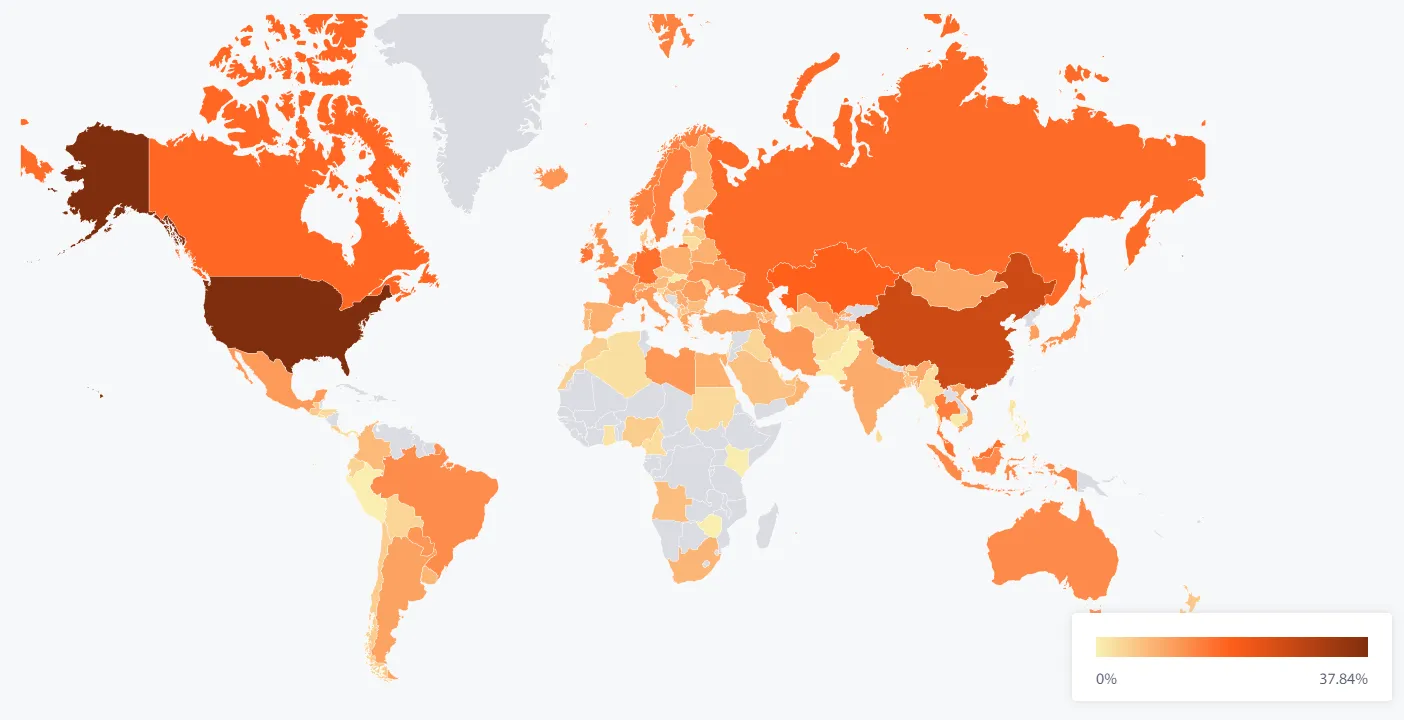

The Cambridge Centre for Alternative Finance (CCAF) has updated its Bitcoin Electricity Consumption Index (CBECI), releasing a tool that visualizes Bitcoin’s CO2 emissions.
Chinese remain second-largest Bitcoin miners
According to the CBECI, the United States are the largest contributors to Bitcoin’s total hashrate, with a market share of 37.8%. A total of 30.8% of the US hashrate share comes out of Georgia. Somewhat surprisingly, the US is followed by China with a market share of 21.1%.

Officially, the Chinese government banned crypto mining in June 2021, but as it seems now, this regulation is hardly enforced at all. Shortly after the ban, the CBECI showed virtually no mining activities in China, but by September, the Chinese hashrate share suddenly returned.
A report by the University of Cambridge suggests that the mining activities in China never actually stopped. Instead, miners went underground and used VPN services to mask their location for a short while, before returning back to using local proxy services.
Greenhouse gas emissions comparably low, but rising
At the time of writing, Bitcoin’s annual energy demand is estimated at around 94 TWh, placing its energy consumption somewhere between Finland and the Netherlands. This amounts to 0.42% of the world’s total energy production.
A newly released tool by the CCAF documents Bitcoin’s contribution to greenhouse gas emissions, which have been consistently growing every year since 2015. It is currently estimated that Bitcoin makes up for slightly less than 0.1% of the world’s total greenhouse gas emissions.

Carbon-neutral Bitcoin is still possible
The CCAF also published data on Bitcoin’s energy sources since 2019. According to their estimates, the percentage of coal energy has decreased slightly, while the percentages for gas and nuclear power have increased. Unfortunately, the percentage of hydropower, which is the most sustainable energy source for Bitcoin, has decreased from 38.9% to only 14.9%.

The CCAF however admits that they might have overestimated Bitcoin’s carbon footprint, as they do not take into account flare-gas and off-grid Bitcoin mining, waste heat recovery, or carbon offsetting. Especially the practice of using crypto mining as a method to avoid flaring excess natural gas could pave the way towards carbon-neutrality.
It is estimated that this technology, if used on a global scale, could cover Bitcoin’s entire energy consumption more than sevenfold. The CCAF writes:
Unlike other industries, Bitcoin mining is relatively mobile. In their quest for cheap and abundant energy sources, miners can set up new facilities fairly quickly all over the world […]. As a result, Bitcoin miners can tap into so-called ‘stranded’ energy assets that cannot easily be put to productive use by other industries. In those cases, Bitcoin miners are […] soaking up surplus energy that would otherwise have been lost or wasted.























